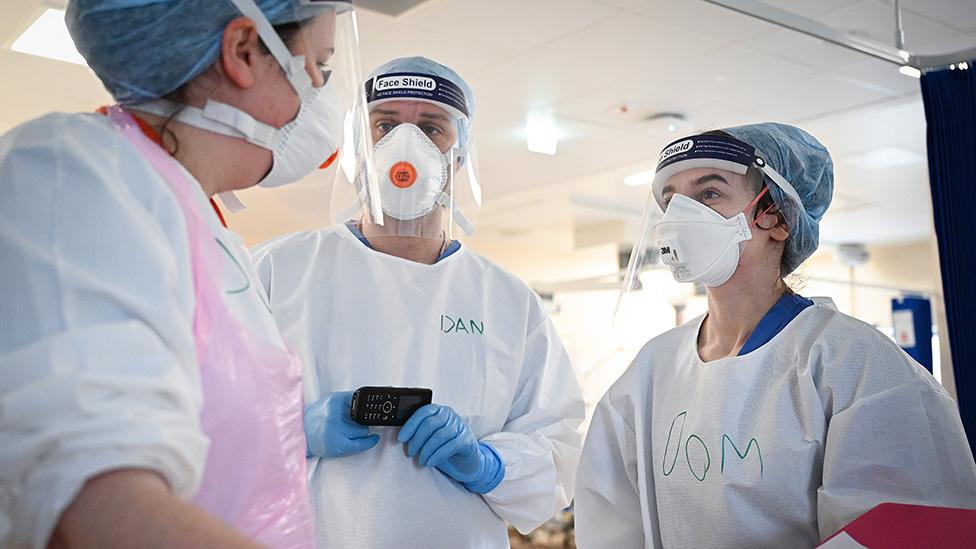Covid: What's the state of the outbreak in Scotland?
- Published
- comments
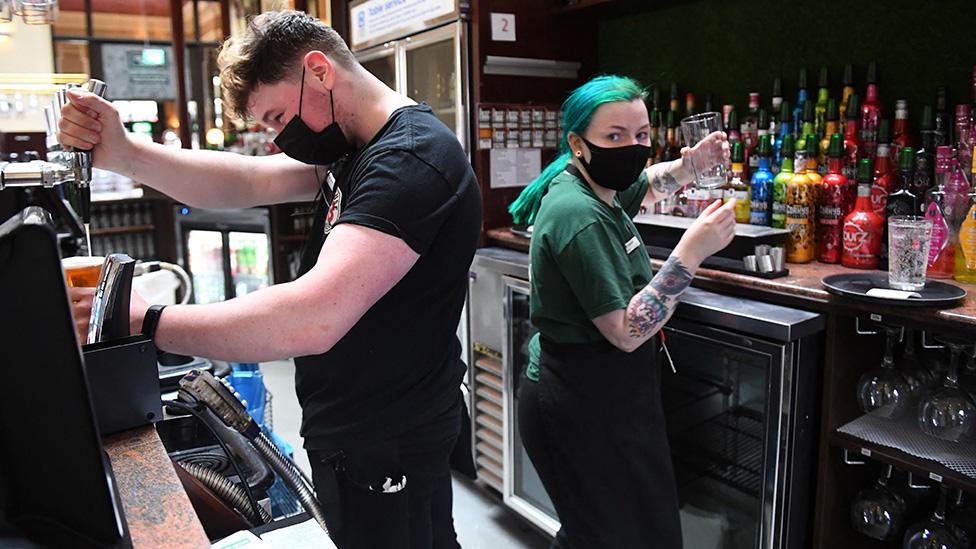
It is expected that pubs will be able to serve alcohol indoors under the latest easing of restrictions
Most of Scotland will move to level two next Monday in the latest easing of Covid restrictions.
The new changes mean that three households will be be able to mix indoors and pubs can serve alcohol inside.
However, cases have begun to rise slightly in recent days and health officials are dealing with a serious outbreak in north-east Scotland.
Here are five figures which indicate the state of the pandemic in Scotland.

1. Infections have fallen - but is the decline slowing?
The emergence of the Kent Covid variant in the weeks before Christmas drove a massive spike in cases in Scotland.
At the beginning of the year, the number of weekly cases per 100,000 people in Scotland almost reached 300, triggering a full lockdown which lasted almost four months.
Cases have mainly been falling since January, although there was a small rise in mid-March after Scotland's primary school pupils returned to classrooms.
However, the decline has been flattening and has actually begun to increase in recent days.
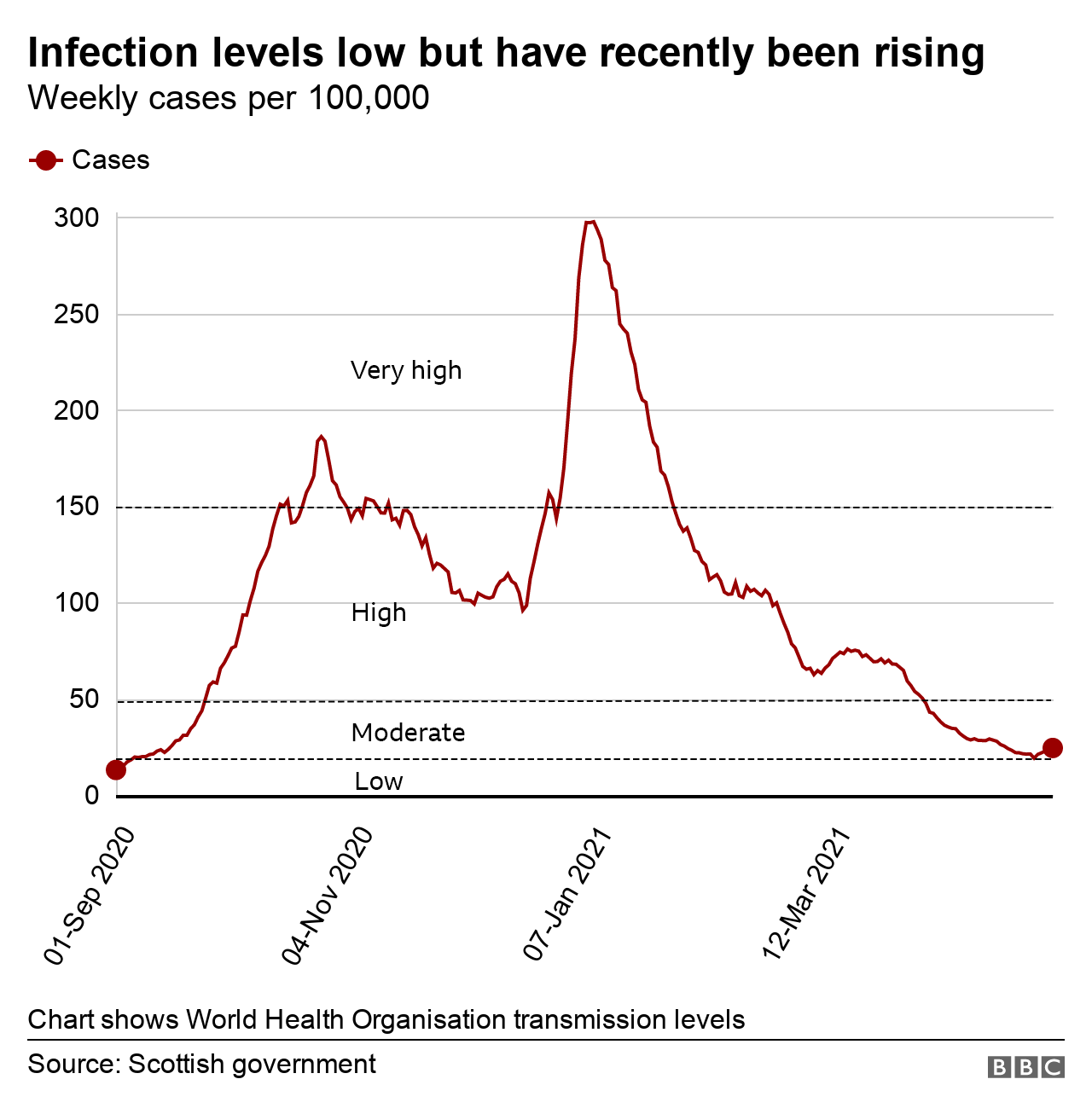
On Monday, the rate was 24 weekly cases per 100,000 people in Scotland - the fifth day in a row the rate has risen. The Scottish government believes this increase is "largely driven" by the Moray outbreak.
Despite the recent increase, Scotland is still categorised as having a "moderate" level of community transmission, using a World Health Organization (WHO) system for measuring infection levels, external, with the rate sitting just above the "low" threshold.
2. The Moray outbreak is still concerning health officials
Looking at a local authority breakdown of case rates across Scotland, there is one stand-out exception.
Infection levels have been rising in Moray since the beginning of April and the rate was almost 94 cases per 100,000 on 7 May - well above the 50-case threshold for level three.
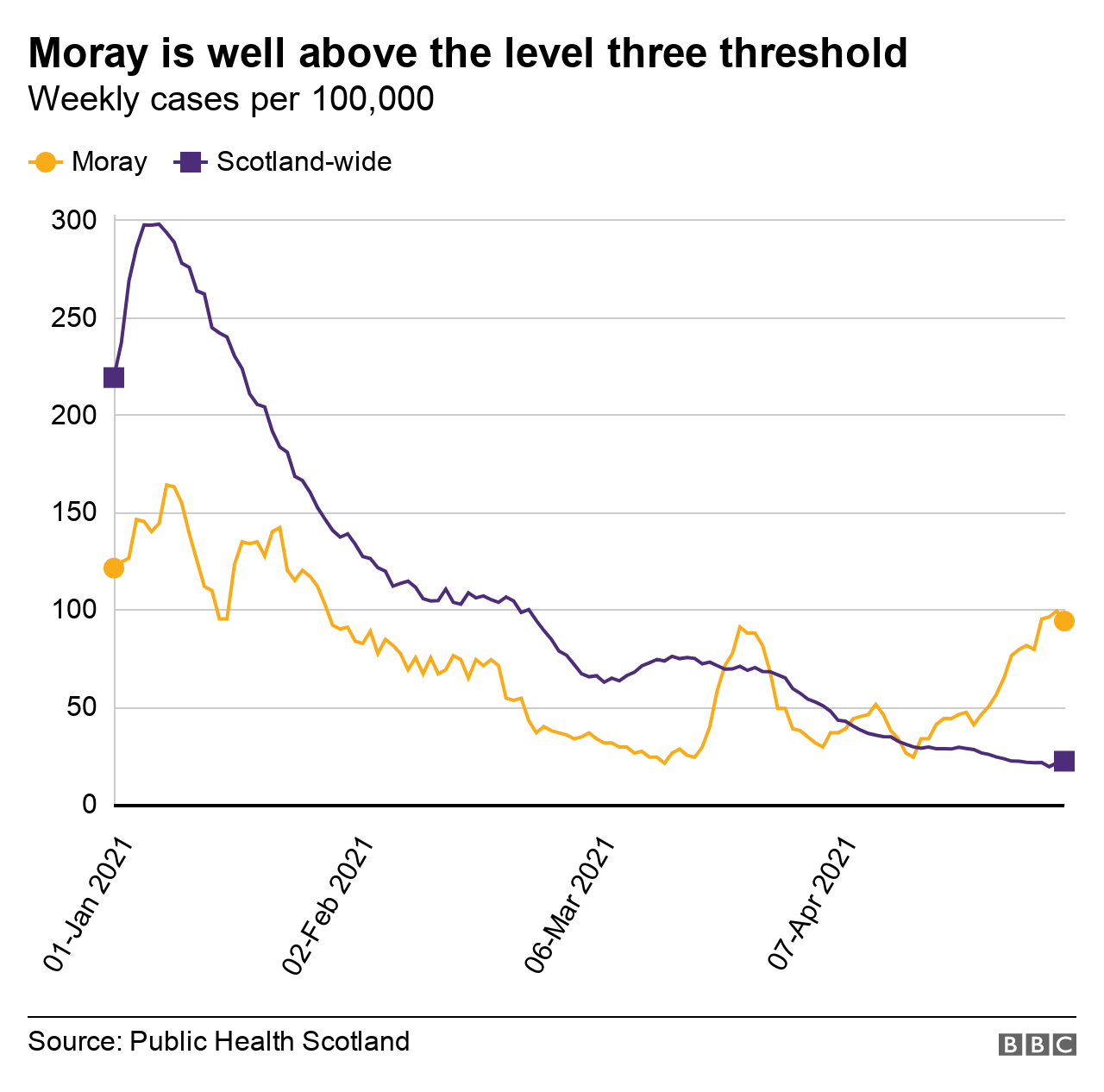
The area has seen relatively low levels of Covid throughout most of the pandemic, but the rate in Moray is more than four times the Scotland-wide rate.
Health officials have said the area is experiencing "uncontrolled, sustained community transmission" of the virus and it is not yet clear if the outbreak has peaked.
First Minister Nicola Sturgeon said it was "highly probable" that Moray would remain in level three from 17 May, with travel restrictions in and out of the area,
"Unless the situation were to materially improve over the next few days, it would simply not be safe or sensible to ease restrictions there," she said.
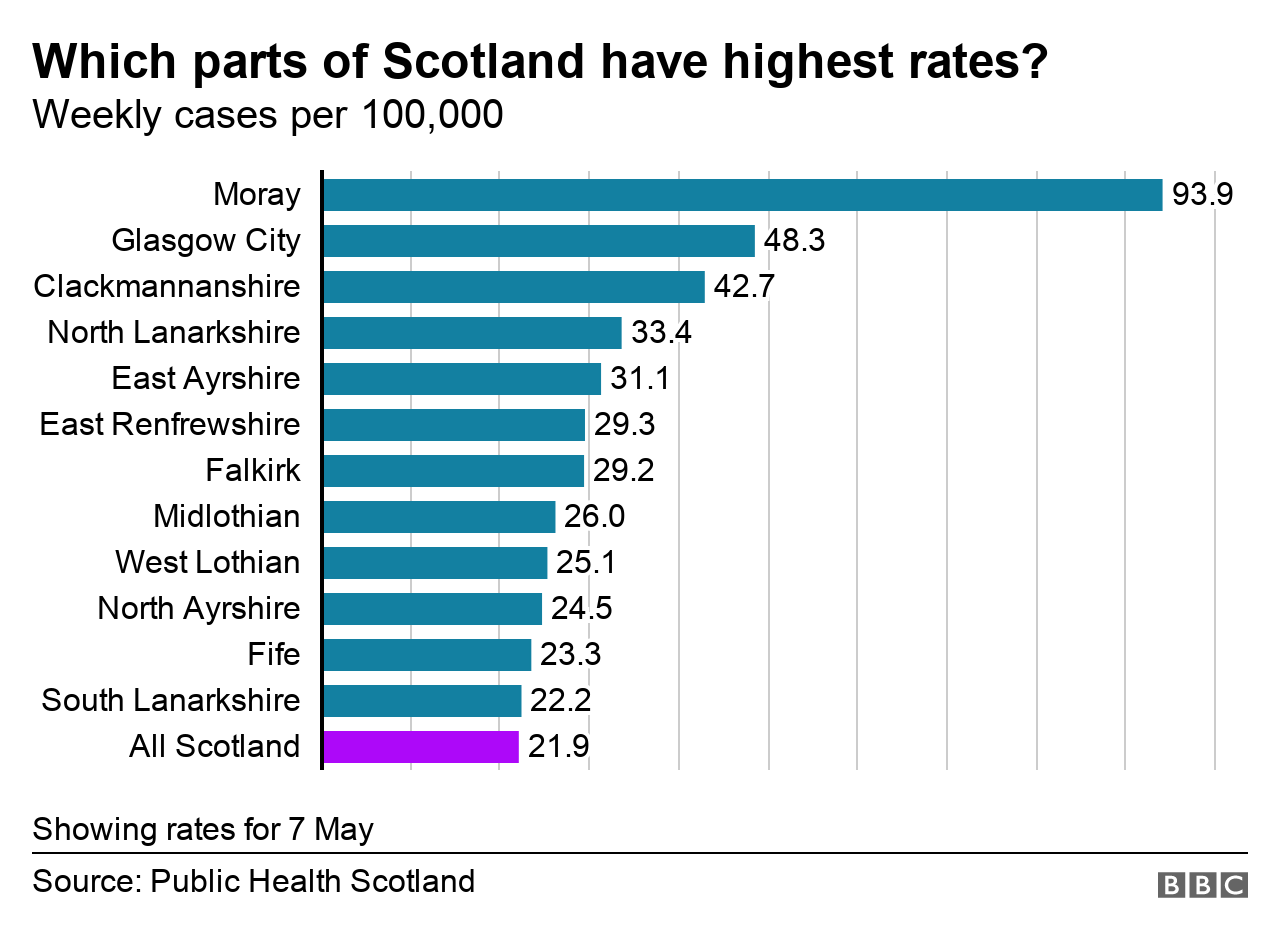
As of 7 May, there were 12 local authorities with infection rates above the Scotland-wide level, but only Moray is above the level three threshold.
The Scottish government also takes into account other measures, like pressure on local health services, when deciding the local authority levels.
3. Covid death rate is almost back to summer 2020 levels
Looking at Covid deaths within 28 days of a positive test, the number of new deaths is at a similar level to where it was at the end of the summer.
Only one death has been registered since the beginning of the month, giving Scotland a Covid death rate of 0.018 deaths per 100,000 people.
This rate has come down from a peak of eight weekly deaths per 100,000 in January as the Kent variant was spreading rapidly.
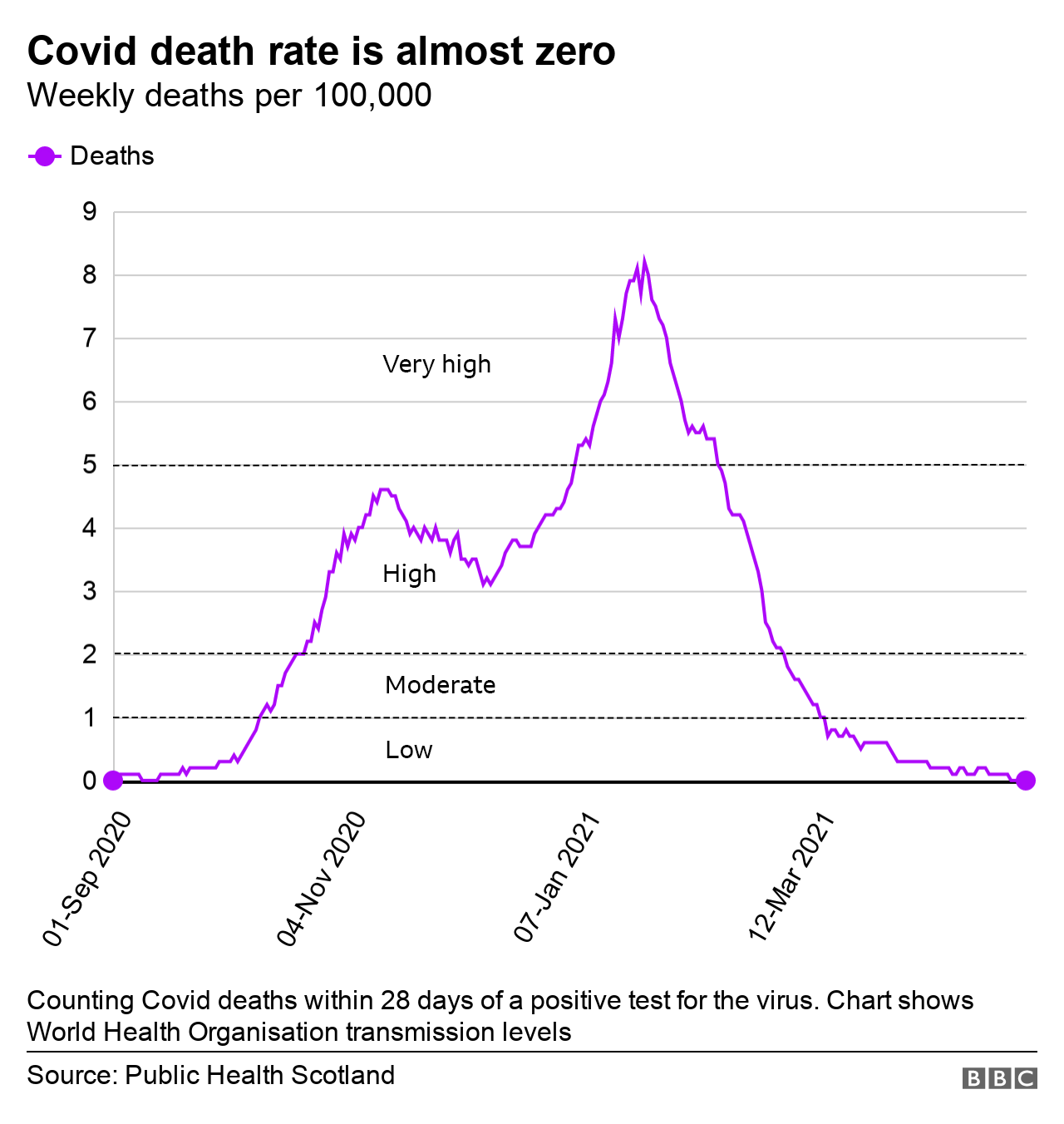
A total of 7,661 people have died in Scotland following a positive test for Covid-19.
However, if you count all death certificates that mention Covid-19, the death toll is 10,097, according to the National Records of Scotland, external.
The Scottish government says this sustained decline in the death rate has been achieved through a combination of people sticking to lockdown rules, and the vaccination of those most vulnerable to becoming severely ill or dying from Covid-19.
According to the WHO thresholds, the death rate in Scotland indicates "low" levels of community transmission.
4. Hospital admissions
In the week up to 28 April - the most recent figures available from Public Health Scotland, external - 62 people were admitted to Scottish hospitals for Covid treatment.
The last time the figure was this low was 9 September, but then the trajectory was very much up rather than the sustained decline seen now.
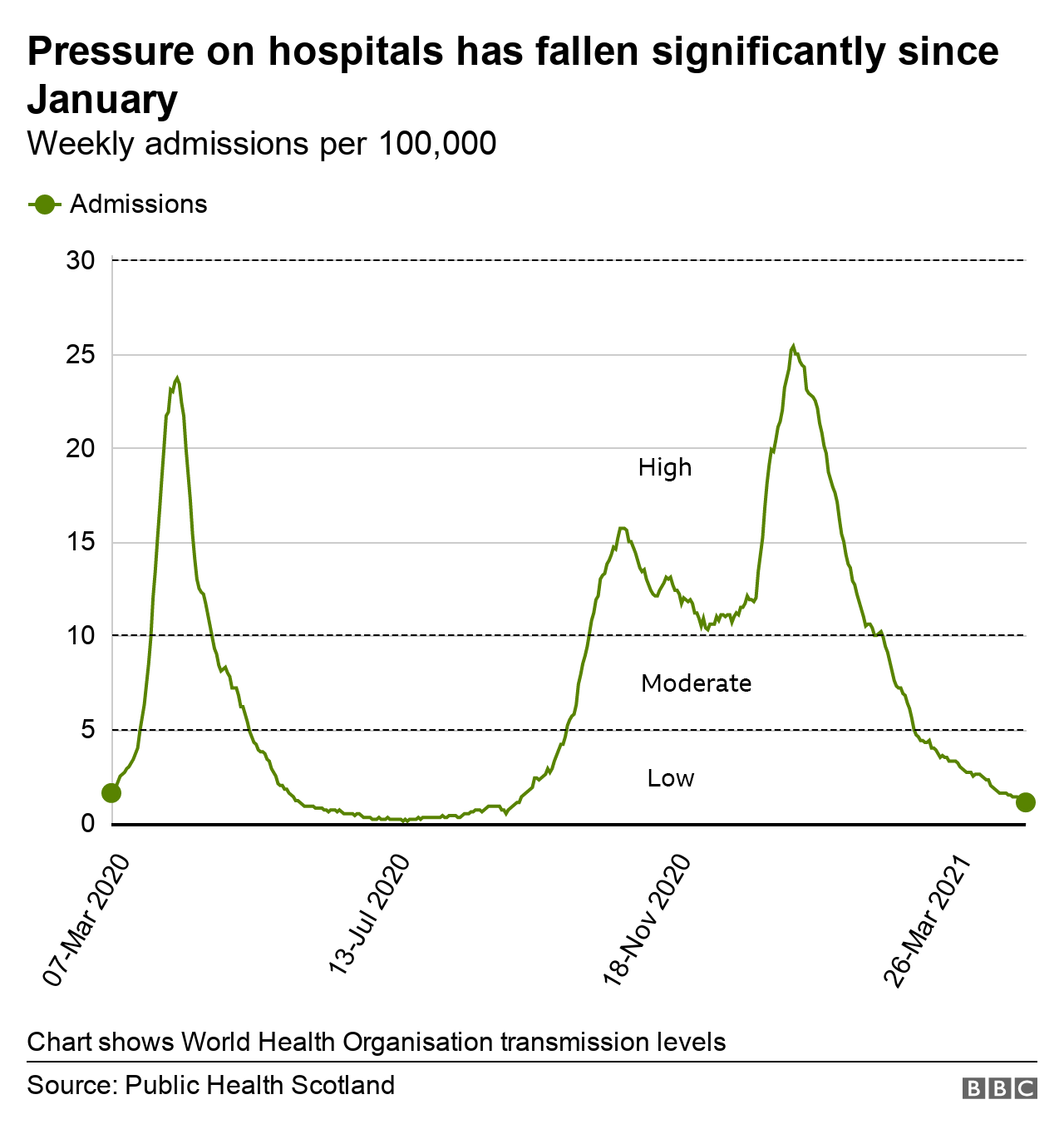
The number of weekly admissions never reached zero over the summer, but did get down to eight in mid-July before beginning to rise again.
The rate of admissions per 100,000 is currently 1.1, giving Scotland a "low" level of community transmission according to the WHO thresholds.
5. Almost two-thirds vaccinated with at least a first dose
According to Scottish government figures, close to three million people had received a first dose of a Covid vaccine by 9 May - almost 65% of the total population aged 16 or over.
About 1.5 million people are now fully vaccinated having received both doses of a vaccine.
It's clear from the chart below that there's been a big push on second doses in recent weeks, completing the vaccination of the many thousands who were given a first dose in February.
However, the daily number of first doses being administered appears to be on the rise again.
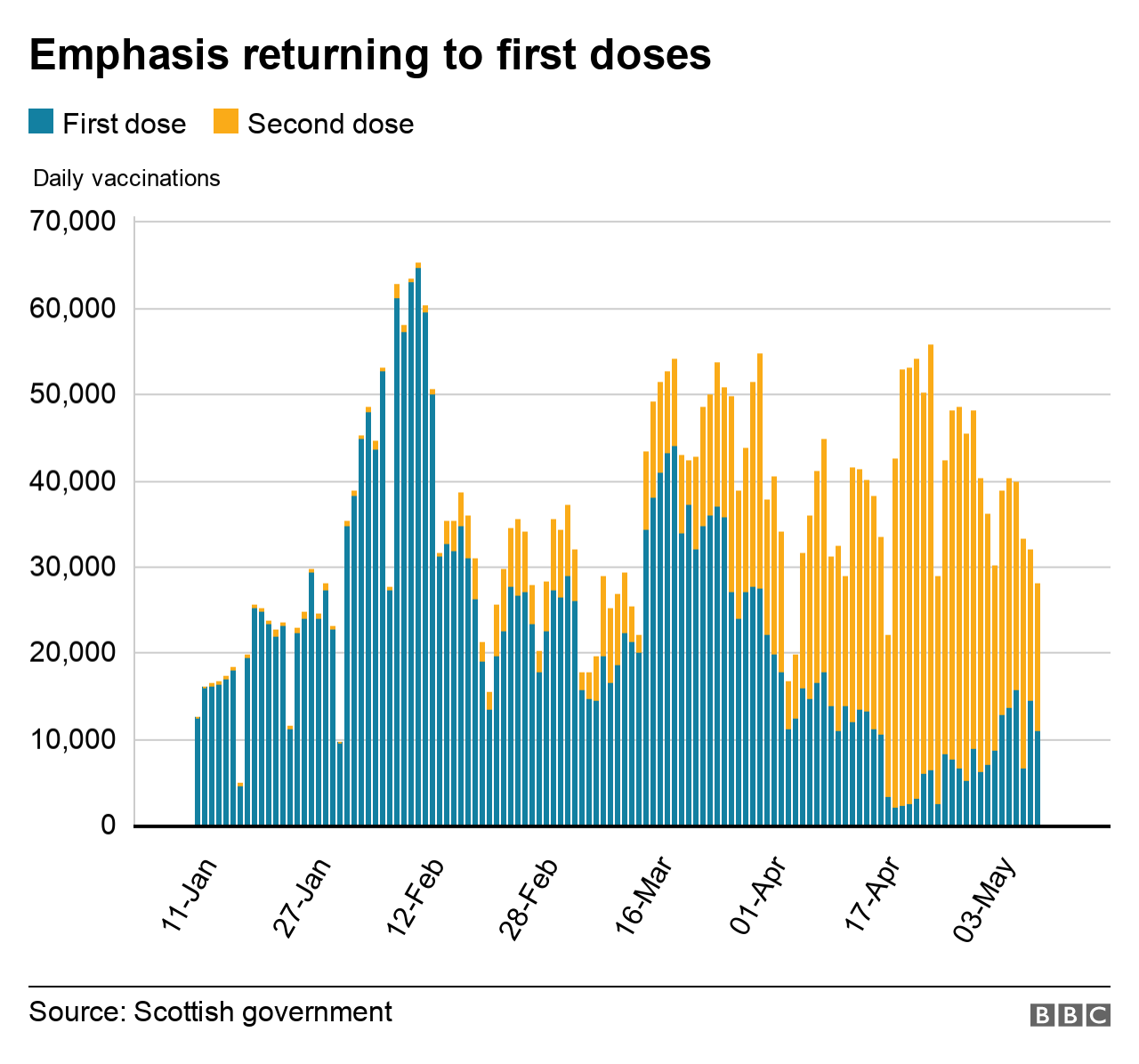
The Scottish government also says that everyone in the nine priority groups, as set out by the Joint Committee on Vaccination and Immunisation, external, has now been offered a vaccine.
Vaccination targets in the 60-64, 70-74 and 75-79 age groups have been met and are close to completion in the 55-59, 65-69 and 85-plus age groups.
People in their 40s should now be receiving their vaccination invitations in the post. The Scottish government is aiming to offer a vaccine to everyone aged 16 or over by the end of July.
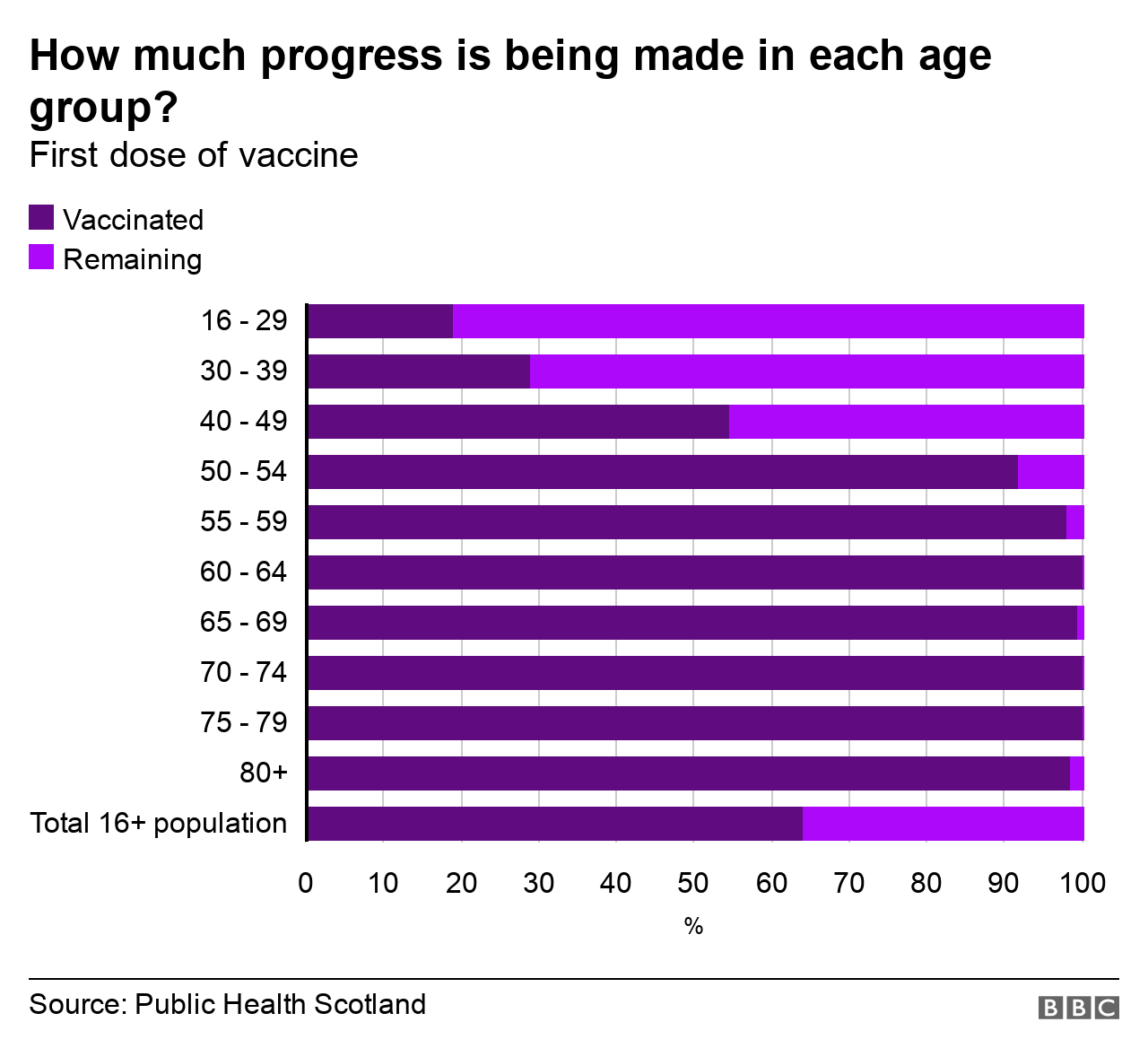
How does the WHO levels system work?
The WHO outlines five "situational levels" ranging from level zero, when there should be "no restrictions" on daily activities, up to level four which requires a full lockdown to tackle an "uncontrolled epidemic".
Using measures like Covid deaths, cases and hospital admissions, the WHO system indicates that Scotland is likely to be in level one.
That's where the organisation recommends that "basic measures" should remain in place to prevent Covid infections spreading, but any disruptions to social and economic life should be "limited and transient".
There are a couple of important caveats to note about the WHO guidelines, external, which were published in November.
Firstly, they were written before vaccines were approved for use and so do not take into account a country's vaccination programme.
Secondly, the advice also came out before the widespread emergence of new strains of Covid-19, which can be more transmissible and in some cases more deadly too.


- Published11 May 2021

- Published14 April 2021
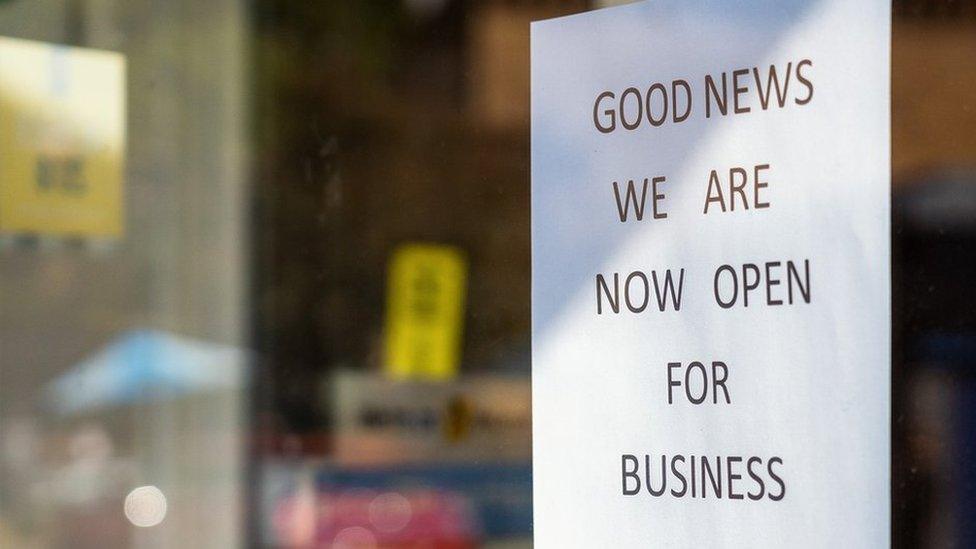
- Published23 March 2021

- Published25 February 2021
